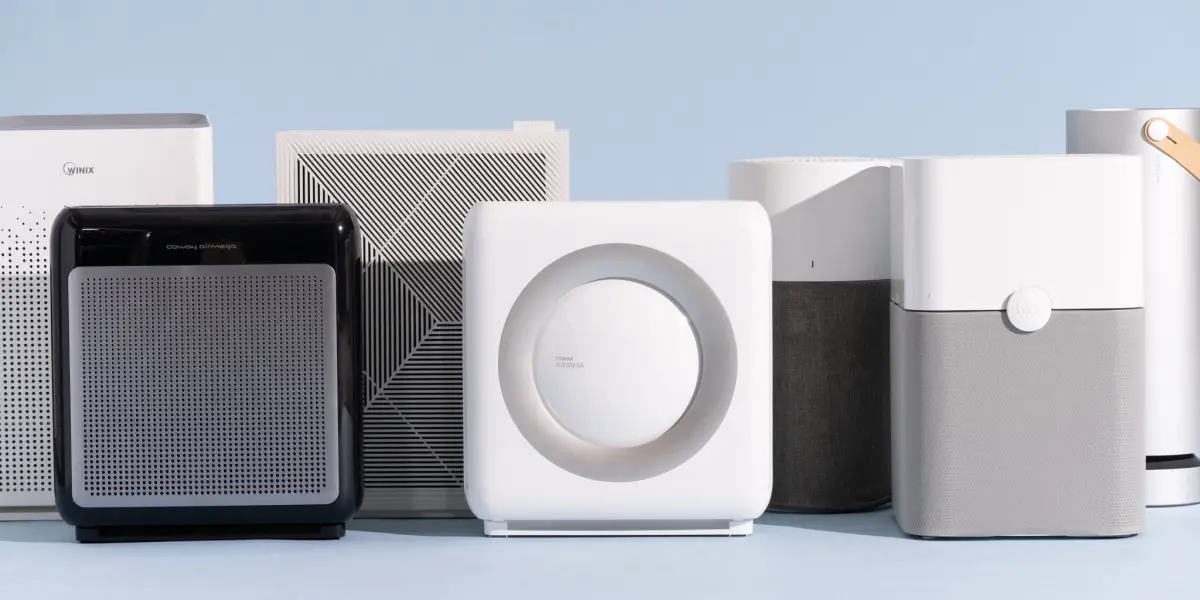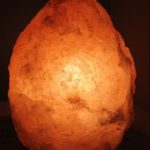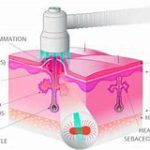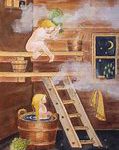Last Updated on 1 year by Francis
Air pollution has become one of the most pressing environmental concerns of modern times. With air quality becoming increasingly worse in many cities and countries, more people are looking for ways to improve the air quality in their homes. One of the most effective ways to do this is by using an air purifier. But with so many different types of air purifiers on the market, it can be difficult to decide which one is the safest for your family. In this article, we’ll discuss what the safest type of air purifier is, and why it’s important to take air purifier safety into consideration when purchasing one.
The safest air purifier is one that uses HEPA filtration technology. HEPA stands for High-Efficiency Particulate Air, and it is designed to capture particles as small as 0.3 microns in size. HEPA filters remove 99.97% of airborne particles, making them highly effective at trapping allergens, dust, smoke, and other pollutants.

Contents
What Makes an Air Purifier the Safest Option?
Air purifiers are becoming increasingly popular as more and more people realize the importance of having clean air in their homes. Air purifiers can help remove pollutants and allergens from the air, making it safer for us to breathe. But not all air purifiers are created equal, and there are many different types and styles to choose from. So what is the safest type of air purifier?
The safest type of air purifier is one that uses a HEPA filter. HEPA stands for High Efficiency Particulate Air, and it is a type of filter that is designed to trap very small particles. HEPA filters are able to capture particles as small as 0.3 microns, which is much smaller than the particles found in most airborne pollutants. This means that the air purifier will be able to remove a wide range of pollutants, including dirt, dust, pollen, mold, and other allergens.
In addition to using a HEPA filter, it is also important to make sure that the air purifier has a strong fan that is able to circulate the air in the room effectively. This will help the purifier to remove pollutants more quickly and efficiently, ensuring that the air in the room is as clean as possible. It is also important to make sure that the air purifier is able to adjust the fan speed and filter settings, so that it can be adjusted depending on the level of air pollution in the room.
HEPA Filters and Air Filtration Technology
HEPA filters are the most effective type of air filtration technology available today. They are able to capture particles as small as 0.3 microns, which is much smaller than the particles found in most airborne pollutants. This means that the air purifier will be able to remove a wide range of pollutants, including dirt, dust, pollen, mold, and other allergens.
HEPA filters are also designed to be very efficient, meaning that they can capture a large amount of particles without using a lot of energy. This makes them an ideal choice for air purifiers, as they are able to remove a large amount of pollutants without using a lot of energy.
Regular Maintenance and Replacement
It is also important to make sure that the air purifier is regularly maintained and replaced. This means that the filters should be changed or cleaned regularly, and the air purifier should be checked for any signs of damage or malfunction. Regular maintenance and replacement of air purifiers can help ensure that the air in the room is as clean as possible.
Additionally, it is important to make sure that the air purifier is able to adjust the fan speed and filter settings, so that it can be adjusted depending on the level of air pollution in the room. This will help the purifier to remove pollutants more quickly and efficiently, ensuring that the air in the room is as clean as possible.
Types of Air Purifiers
There are many different types of air purifiers available on the market today. These include traditional air purifiers, ionic air purifiers, activated carbon air purifiers, and ozone air purifiers. Each type of air purifier has its own advantages and disadvantages, and it is important to consider all of these factors when making a decision on which type of air purifier to purchase.
Traditional Air Purifiers
Traditional air purifiers are the most common type of air purifier and typically use a HEPA filter to remove airborne pollutants. They are usually the most affordable type of air purifier, and they are usually easy to maintain and operate. However, traditional air purifiers are not ideal for removing odors or other types of gases, so they may not be the best choice for people who suffer from allergies or asthma.
Ionic Air Purifiers
Ionic air purifiers use an ionizer to remove pollutants from the air. They use an electric current to create a charged field of air, which attracts and traps pollutants in the air. Ionic air purifiers are usually more expensive than traditional air purifiers, but they can be more effective at removing odors, gases, and other types of allergens.
Other Factors to Consider
In addition to the type of air purifier, there are other factors that should be considered when choosing an air purifier. It is important to consider the size of the room that the air purifier will be used in, as well as the type of pollutants that need to be removed. Additionally, it is important to ensure that the air purifier is able to adjust the fan speed and filter settings, so that it can be adjusted depending on the level of air pollution in the room.
Energy Efficiency
When choosing an air purifier, it is also important to consider the energy efficiency of the unit. Many air purifiers use a lot of energy, so choosing an energy-efficient air purifier can help save money on electricity bills. Additionally, it is important to make sure that the air purifier is able to adjust the fan speed and filter settings, so that it can be adjusted depending on the level of air pollution in the room.
Cost
Finally, it is important to consider the cost of the air purifier. Air purifiers can range in price from a few hundred dollars to several thousand dollars, so it is important to consider your budget when making a decision. Additionally, it is important to make sure that the air purifier is able to adjust the fan speed and filter settings, so that it can be adjusted depending on the level of air pollution in the room.
Related Faq
What is an Air Purifier?
An air purifier is a device used to reduce airborne pollutants and allergens in the air. It typically consists of a fan, a filter, and a housing. The fan draws air into the purifier, the filter captures and removes particulates, and the housing contains the filter and other components. Air purifiers can be used in residential, industrial, and commercial settings to reduce the presence of dust, pollen, smoke, and other particles in the air.
What are the Different Types of Air Purifiers?
There are several different types of air purifiers, including mechanical, electronic, and hybrid air purifiers. Mechanical air purifiers use a fan to draw air through a filter to capture particles. Electronic air purifiers use an electrical charge to attract and capture particles. Hybrid air purifiers combine both mechanical and electronic filtration to provide more efficient filtration.
What is the Safest Type of Air Purifier?
The safest type of air purifier is one that uses only mechanical filtration. Mechanical air purifiers use a fan to draw air through a filter. The filter captures particles and removes them from the air. This type of air purifier does not use any electrical components, so there is no risk of electrical shock or fire.
How Does a Mechanical Air Purifier Work?
A mechanical air purifier works by drawing air into the purifier with a fan. The air passes through a filter which captures particles such as dust, pollen, smoke, and other allergens. The filter traps the particles and removes them from the air, leaving clean air behind. The filter needs to be replaced regularly in order to maintain its effectiveness.
What are the Benefits of a Mechanical Air Purifier?
The main benefit of a mechanical air purifier is that it does not require any electrical components, making it the safest type of air purifier. It also does not produce any ozone or other emissions, making it an environmentally friendly option. Additionally, mechanical air purifiers are typically more affordable than other types of air purifiers.
Are There Any Drawbacks to Using a Mechanical Air Purifier?
The primary drawback to using a mechanical air purifier is that it is not as effective at removing smaller particles from the air. Additionally, the filters need to be replaced regularly in order to maintain their effectiveness. Finally, mechanical air purifiers are typically louder than other types of air purifiers.
Air Purifier Vs Ionizer (What’s The Difference & Are Ionizers Safe?)
In conclusion, the safest type of air purifier is one that has a HEPA filter as its main filter. This filter traps airborne particles and allergens, helping to reduce the amount of allergens and pollutants in the air. Additionally, it is important to look for an air purifier with additional filter types, such as carbon filters and ionizers, which can further reduce the amount of particulates in the air. Finally, it is important to consider the size and design of the air purifier, as well as its energy efficiency, to ensure that the air purifier is suitable for the space in which it will be used. By taking all of these factors into consideration, you can be sure that you are purchasing the safest type of air purifier for your home.








